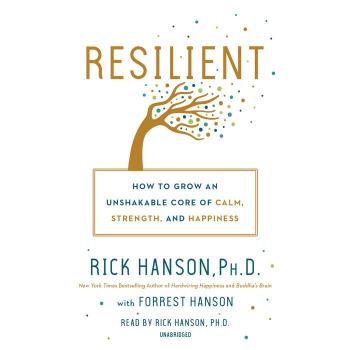A More Christ-Like God by Bradley Jersak
A More Christlike God by Bradley Jersak makes the case with the subtitle that there is a more beautiful Gospel when God is made Christlike. Instead of showing Christ to be like God, Jersak makes the case that God is more like Christ.
Jersak makes the claim that God is like Jesus, not the other way around. The personality of God is identical to the personality of the man called Jesus of Nazareth. Jesus did not save us from God the Father. Jesus came to reveal God as Savior. Jesus didn’t come to enable God to love us. Jesus came to reveal God as love.
In chapter 1, Jersak uses negative theology – the idea that what we can know about God is what He is not. He asks the question: “How is God not a father?” Jersak shows that the Bible makes statements that show that God is God because some truths, whose opposites are never true. For example, God is good and is never evil. God is love and every other aspect of God must align with His love. God is light and there is no darkness (1 John 1:9). God is perfect beauty and there is no ugliness in Him. God is perfect truth and He cannot be called a liar.
Jersak lists a set of un-Christlike images of God in chapter 2. These include: God the doting grandfather God the deadbeat dad, the punitive judge, and the Santa Claus.
Jersak turns to discuss what he considers opposing values: freedom or love in chapter 3. While I agree with Jersak that the divide exists, I disagree with this premise. I believe that God’s pure will is His pure love. If we choose love, we will choose freedom. Jersak makes the following statement:
freedom versus love, rights or responsibilities, our interests or somebody else’s
Why this forced dichotomy? What makes one think that God’s freedom is in opposition with His love? When one places freedom above love, then torture of another person is possible (although not justified.) On the other hand, when love reigns, we are able to love. God’s love for us somehow makes loving God (worship), loving one another (fellowship), loving our neighbor (compassion) and loving our enemy (forgiveness) possible. Jersak states that “from Gethsemane to Golgatha, Christ’s love is willing, not willful – consensual, not coercive”.
If sovereign is God’s essential nature, then it doesn’t matter what He chooses to do, and it doesn’t matter how we question Him. He still will do what He freely chooses to do. Jesus helps us to shift our view of God from the Old to the New Testament. God’s essence is not pure will, it is selfless love. After he resolves the seeming contradiction between God’s freedom and God’s love, Jersak introduces anti-theodicy of the cross in chapter 9. Jersak asks:
Does God have a dark and wrathful side that balances out His goodness and love?
Jersak makes the case in chapter 10 that God’s wrath is God’s love as consent. The wrath of God is created by God’s people. God’s love-as-consent makes wrath a matter of consequence. Jersak a valid explanation for how a loving God could exact out such judgment on the people He created. Jersak lists the stages of faith to develop the idea that there is a cruciform form of action. Jersak calls this the lens of cruciform consent. God is good, God is love, God is not violent because He never does violence directly. God will not bring about His ends through violent means in His love. Wrath is a metaphor for the intrinsic consequences of our refusal to live in the mercies of God. God’s wrath in consent is passive wrath. The actual work of His wrath happened through the Death Angel and/or Satan. God’s active role is in protecting His people. God protects His people from His wrath through repentance, surrender, or intercession (Abraham in Genesis 18 or Moses in Exodus 33). God’s wrath is also defined as “giving people over” to their sinful desires (Romans 1). God’s wrath works as people are “give over” to their sins (Isaiah 64:7).
God rescues us from “the wrath” through Jesus. Wrath is not the punishment of God, but is the consequence of sin, which is the act of rejecting God’s mercy. Jersak makes the convincing case that wrath, which is God giving us over to our sinful desires, is at some level, consent – cruciform consent.
God consents non-violently and empties of Himself in love for us, which allows for sin to happen.
God’s loving consent to our freedom has born the fruit of violence, and not love. Because we are slaves to sin, given to our own freedom, we choose violence, not love. Love takes an act of God’s grace and the working of the Holy Spirit. Jersak contrasts God with an angry king and compares God to angry parent. Jersak uses Paul’s experience of persecuting Christians as “kicking against the goads” in Acts 26:14, the Israel’s plague and turning to the bronze snake in Numbers 21, the prodigal son experience in Luke 15, are all biblical examples of God’s wrath by cruciform consent.
After exploring different theories of atonement, Jersak relies on the ransom theory. Jersak explains the penal substitution, court-room cram of retributive form of the Gospel presented by Calvin. Jersak contrasts this with a new model for a Gospel presentation. He calls it the “Beautiful Gospel.” It is based on a restorative version of healing love that shows how the Gospel.
Disclosure of Material Connection: I received this book free from the author and/or publisher through the Speakeasy blogging book review network. I was not required to write a positive review. The opinions I have expressed are my own. I am disclosing this in accordance with the Federal Trade Commission’s 16 CFR,Part 255.













